Table of Contents
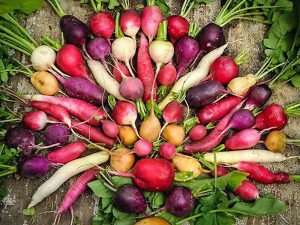
Not surprisingly, annual consumption rate here in America is estimated to hit millions of pounds involving all sorts of radishes. The yummy treat has been enjoyed by people all over the continent since time immemorial – it just goes to show how much we love this crispy vegetable goodness!
What makes them so versatile is the fact that there are really so many different varieties of radishes that come in different sizes, shapes, colors, and tastes. The botanical literature is full of different varieties. There are as many distinctively named ones in a round hundred, or just over 100 if you count the latest additions to this list! While radishes may not be the most glamorous of vegetables, but they’re a tasty and healthy option. They contain many vitamins which can help keep your body running smoothly! Radish slices make an excellent addition to any meal or snack so I encourage you give them another chance before writing this delicious root off as just “a little boring.”
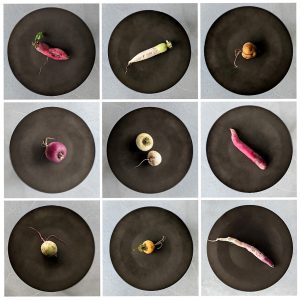
Radishes come in all shapes, sizes, and colors. While there are many different types of radishes, they can generally be divided into two categories: spring radishes and winter radishes. Spring radishes, such as the common red radish, are small and have a mild flavor. They are typically harvested in early summer. Winter radishes, on the other hand, are much larger and have a much sharper flavor. They are usually harvested in late fall or early winter. While both types of radishes can be used in salads, winter radishes are usually cooked before being eaten. Whether you choose to grow spring radishes or winter radishes will largely depend on your personal preferences. However, both types of radishes can add color and flavor to your garden!
Here’s Your Promised Everyday Guide to Different Types of Radish
The first ones are the most common ones, so if you’re looking for something more exotic, go ahead and scroll down till you find the real gems! Common radish species are the ones that are easy to buy or grow and the more rare ones, that takes more effort to grow or buy. The common radish include: red round radish, daikon radish, french breakfast radish etc. The less common varieties include: black radish, watermelon radish, Bartender Red Mammoth and much more.
While common varieties can be easy to get your hands on (cheap to buy, easy to grow), some more rare radishes can be way harder to find and more expensive. However, both groups of vegetables offer a unique set of nutrients and flavors that can contribute to a healthy diet. So whether you’re looking for an unusual ingredient to impress your dinner guests or just trying to add more variety to your meals, don’t be afraid to experiment with different types of radishes.
The Watermelon Radish
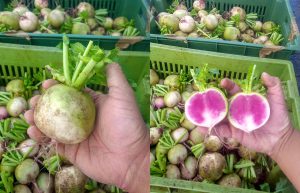
This one is truly no-brainer. You pick one up, you slice it open, here it is – a tiny watermelon (of course a fake one). We really like to name things after some other things that we know and like. Same is the true for the watermelon radish that does not have anything to do with watermelons at all, but clearly has that red/green color combination going on that is, indeed a reminiscence of a real watermelon fruit. Except that watermelons do not grow underground, and they do not taste peppery!
While this beautiful and round root vegetable does taste quite a lot like most of your usual radishes, it truly deserves a special praise because of it’s appearance. The unique color of the watermelon radish is attributed to the presence of anthocyanins, which are pigments that are also found in other fruits and vegetables such as blueberries, blackberries, and eggplants. It’s actually a water soluble pigment that is found in many fruits and vegetables. While the white color on the outside of a watermelon radish is caused by the absence of anthocyanins, which is quite unusual given the fact, that this is where this pigment is mostly concentrated in most of the radish varieties.
The anthocyanin content and the resultant red color of a watermelon radish can be affected by numerous factors, including climate, soil, variety, and age. For example, cooler temperatures and higher levels of soil nitrogen result in a decrease in anthocyanin content and a corresponding decrease in red color intensity. Conversely, warmer temperatures and lower levels of soil nitrogen result in an increase in anthocyanin content and a corresponding increase in red tint.
It sure does have a same hard green exterior and pink interior just like watermelon, but you cannot say the same about it’s taste. In some cooking or botanical literature you may also expect it to find under the “Red Meat” radish alias or even “Roseheart radish”, while asians call them “Xin Li Mei” (Shinrimei) radish and “Misato” radish.
The Watermelon radish is most commonly eaten fresh and sliced thinly. This is because the bright color of the root vegetable is best emphasized this way. Steaming or frying the radish will reduce the color vibrance significantly. When cooking radishes, it is important to keep this in mind. Red meat radishes can add flavor and color to any dish. They can be enjoyed raw, in salads, or cooked in a variety of ways. Red meat radishes are a healthy and delicious addition to any diet.
• Top five facts about Watermelon type radish:
1. Watermelon radishes are a type of winter radish that are native to China.
2. They get their name from their watermelon-like appearance, as they have a white flesh with green or pink stripes on the outside.
3. Watermelon radishes are a good source of vitamins C and B6, as well as potassium and magnesium.
4. They can be eaten raw or cooked, and are often used in salads or as a garnish.
5. Watermelon radishes have a milder flavor than other types of radish, and are sometimes described as being slightly sweet.
The Daikon Radish
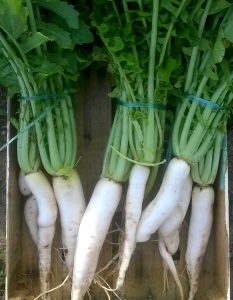
Winter radish, also known as Daikon, is a long white radish that is widely grown in Asian countries, including Korea and Japan. Winter radishes are not very picky when it comes to climate and also grow in the United States. Winter radishes are high in Vitamin C and antioxidants, and they have been shown to boost immunity, improve digestion, and help relieve stress. Winter radishes are typically eaten raw, in salads or as a garnish. They can also be cooked, pickled, or sometimes even made into a juice or tea. Winter radishes are a versatile vegetable that can be enjoyed in many different ways.
It is also worth noting, that Daikon is a type of white radish, but the term “White radish” is actually more commonly used to refer to a different kind of radish, which as you might notice, does not have the distinctive green top, but is entirely white though all the length. It is also more commonly grown in Europe as opposed to it’s close relative – Daikon (“Mooli” and “Mu” radish).
Depending on where you live, Daikon radishes could be the most common radish type of fresh produce available in grocery stores, and they’re also great for cooking! People often mix them with salad due its less spicy and sweet taste in this context, although it also has benefits when prepared as an easy snack from freshness perspectives too! Daikon is a type of vegetable that comes from the dirt, but its skin is usually so smooth and clean. This makes it easy to process daikons in your kitchen with no hassle at all!
• Top five facts about Daikon type radish:
1. Daikon radishes are a type of winter radish that are popular in Asian cuisine.
2. They can grow to be quite large, with some specimens measuring over a foot in length.
3. Daikon radishes are typically white, but can also be found in shades of green, purple, or red.
4. The flesh of daikon radishes is crunchy and slightly sweet, while the skin is thin and peppery.
5. Daikon radishes are a good source of vitamins C and B6, as well as potassium and magnesium.
The White Hailstone Radish
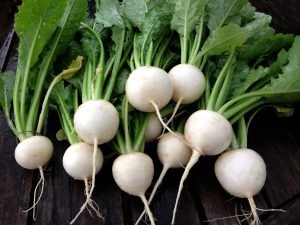
Vegetables are often named by their shape or color features and Hailstone Radish is not an exception. It is quite same as most of the white radishes, but we’re actually more used to see those in shape of Icicle but not the ping-pong ball. Well, here it is, a round and smooth with a crown of leaves at the top and a small rat-tail at the bottom. And guess what? They are likewise just as white on the inside (actually even a bit whiter).
Here is what you can expect in terms of taste: these radishes have a sweet and mild flavor that won’t leave your mouth burning after eating them. They’re crispy, juicy with no spicy aftertaste to speak of! Juicy and crunchy is the best words to describe them.
Hailstone radish (the round white type of radish) are rich in nutrients. hailstone radishes are a good source of potassium, folic acid, and magnesium, also are a good source of copper, riboflavin, and vitamin B. Ascorbic acid is also present in this type of radishes. When choosing radishes, look for ones that are bright white in color and firm to the touch. Avoid radishes that are wilted or have brown spots. Store radishes in the refrigerator, where they will keep for up to two weeks. Wash them just before eating to ensure that they are free of dirt and debris. Radishes can be an excellent addition to any healthy diet.
• Top five facts about Hailstone type radish:
1. Hailstone radishes are a type of radish that is characterized by it’s round form and bright white color.
2. Hailstone radishes usually comes in size of a table-tennis ball (or a golf ball) because that’s is when this root vegetable is best to harvest.
3. Hailstone radishes are traditionally grown in China and Japan, though they can also be found in other countries.
4. We are more used to see round red radishes, but these are naturally white both on the outside and the inside.
5. Hailstone radishes have a milder flavor than other types of radish, making them ideal for use in salads or as a garnish.
The French Breakfast Radish
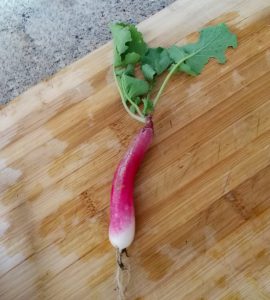
We have to admit, everything dish sounds more posh when you add “French” to it’s name. But you just look at these radiant pinkish-red radishes with a white tip. Aren’t they gorgeous, and also very desirable on your fresh and healthy breakfast table? In addition, this variety of “Raphanus sativus” actually did originated in France, so this title is not just an empty title. It does have a distinctive shape – slightly tuberous body and a white tip just at the bottom end of the root.
According to french people, radishes are a great way to start your day! They’re packed with fiber and antioxidants, which can help boost your metabolism and protect your cells from damage. Plus, they’re low in calories and carbs, so they won’t weigh you down. Try pairing them with some eggs or avocado for a balanced breakfast that will keep you energized all morning long.
These are often included when cooked, but also eaten raw and fresh.
The French breakfast radish tastes very peppery and slightly sweet. It makes this variety of radishes a great addition to salads or as a snack on its own. Most french cooks say, that this type of radish is perfect for adding to salads, sandwiches, or vegetable dishes. They’re also excellent when roasted or grilled.
• Top five facts about French Breakfast type radish:
1. The French breakfast radish is a type of radish that is typically red in color and has a long, cylindrical shape.
2. The French breakfast radish is also known as “Les Radis Petit Déjeuner” radish in France, and it is a variety of the common radish.
3. French breakfast radishes are typically harvested when they are about 3-4 inches in length.
4. The French breakfast radish is a popular type of radish to grow in home gardens.
5. French breakfast radishes can be eaten raw or cooked, and they are often added on toast with butter and salt.
The Cherry Belle Radish
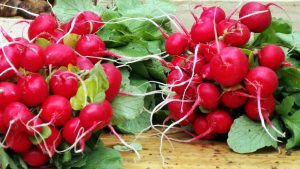
The most common type of radishes on the farmer’s market would likely be cherry belle. They are a red variety that is small and round with a white tip. Other popular varieties include daikon, black radish, and French breakfast radish.
The cherry belle radish (Raphanus sativus) is a popular variety of radish that is grown in many parts of the world. The Cherry Belle variety is a cool-weather crop, and it is a fast-growing radish that can be harvested about 30 days after planting. The cherry belle radish is common and widespread, and it is grown commercially for both its leaves and its root. The cherry belle radish is a source of vitamins A and C, and it also contains high levels of potassium and magnesium.
The cherry belle radish is a popular ingredient in salads and sandwiches, and it can also be eaten raw. The beautiful red exterior of the Cherry Belle radish is not just for show. Inside, you’ll find an white flesh that makes it perfect addition to your salad bowl! One way to use red round radishes to decorate a salad is to slice them into very thin rounds using a sharp knife. You can then separate the rounds into individual petals, and place them in a circle around the edge of the salad bowl, or in the center of the bowl.
You can easily incorporate this valuable root vegetable into your daily diet. A great way to use Cherry Belle radishes as a salad decoration is by cutting them into thin strips, and then weaving them into a lattice pattern. This can be done either on top of the salad greens, or on a separate plate that will be served alongside the salad.
• Top five facts about Cherry Belle type radish:
1. The Cherry Belle radish is a type of radish that is round and red in color.
2. The radish is named after the cherry belle rose, which is also red in color.
3. The Cherry Belle radish is a popular type of radish to grow in home gardens.
4. The average weight of this type can be found around 100 grams, so it’s quite small and does not even require cutting for a quick snack.
5. The Cherry Belle radish is also known to be one of the easiest types of radishes to grow.
The Malaga Radish
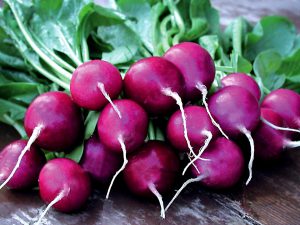
The Malaga radish is not just any old type of spicy, crisp root vegetable. It’s named after the Spanish city that lies on its southern coast – the perfect location for such an authentic flavor! This radish is a round, red (purple) radish that is deep purple in color with a white inside. Malaga radishes are an excellent source of vitamin C and folic acid. They are also a good source of fiber and potassium. This radish has a mild, sweet flavor and can be eaten raw or cooked. The Malaga radish is often used in salads, soup, and stir-fry dishes.
They’re not your ordinary radishes. The intensity of the purple color depends on factors such as light intensity, pH, and the presence of other compounds that can either enhance or suppress anthocyanin formation. These deep purple round varieties have an less usual skin color, which really adds some sophistication to any meal – especially when paired with more expensive beef steaks or other game dishes served at high end restaurants!
The purple round radish is a very popular choice for those who want to add a bit of luxury to their meal. The deep purple color of the radish also makes it a popular choice for those who want to add a bit of color to their plate. Whether served raw or cooked, the purple round radish is a versatile vegetable that can really make a meal special.
• Top five facts about Malaga type radish:
1. Malaga purple round radishes are a type of radish that is named after the region of Malaga in Spain.
2. These radishes are typically small to medium in size, with some specimens measuring up to 10 centimeters in diameter.
3. The skin of a Malaga radish is deep purple in color, while the flesh is white or pale pink.
4. Malaga radishes get their purple skin colour from anthocyanin pigments. These pigments are water soluble and accumulate in the vacuoles of plant cells.
5. Malaga purple round radishes are an excellent source of vitamins and minerals, including vitamin C, potassium, and magnesium.
The Bartender Red Mammoth Radish
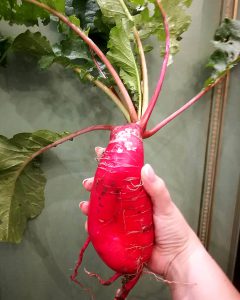
The Mammoth Radish, as it’s name would suggest, is an incredibly large variety of radish. It can grow up to a foot in length and weigh as much as 6 pounds. The roots are pink-red to carmine-red in color, and they are extremely fleshy and juicy. The ‘Bartender Red’ of course refers to the iconic and classic red attire that is often worn by bartenders. The Bartender Red Mammoth Radish is popular in salads and stir-fries, and it can also be pickled or roasted. This variety of radish is quite easy to grow, and it is adapted to a wide range of growing conditions. If you are looking for a radish that is sure to make a big impact, the Mammoth Radish is definitely the way to go.
This specific variety is one of the most popular vegetables in Mexico. They were introduced to this country through Spanish friars, and eventually became decorations for various dishes that are eaten everyday with no regard as to their origins or how they come into being-a perfect example being a garnish!
There is a story, and a very unusual tradition in Mexico involving the Mammoth Radish. Apparently, tradition arises in the mid-18th century, a year when the radish crop was so abundant that entire sections of radishes remained unharvested. In December of that same year, two friars took several irregularly shaped and sized radishes from the abandoned crops and brought them to the Christmas Market (December 23) as curiosities.
The irregularity of the shape is quite common in this radish variety, and of course it attracted the attention of several onlookers and within a short time figures began to be carved from the most interesting shapes of the radishes that were grown. And thus the tradition of Noche de Rábanos was born. Usually these carvings has religious themes related to birth and infancy, like those found at Adoration shrines which is what they typically do for this time-of year. The friars encouraged people not only to look, but also buy them and use as centerpieces inside homes.
• Top five facts about Bartender Red Mammoth type radish:
1. The ‘Bartender Red Mammoth Radish’ has a whole celebration festival built around it.
2. This is truly one of the largest types of radishes, with some specimens weighing multiple pounds.
3. It takes only 35 days for this crop to reach full maturity.
4. Regardless it’s impressive size, this Mammoth variety of Raphanus sativus is completely GMO-free and natural.
5. The ‘Bartender Red Mammoth Radish’ is named after its large size.
The Round Black Radish
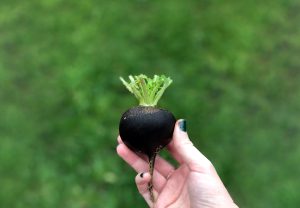
The round black radish is a type of radishes with it’s skin being very dark in color and flesh white. They have an almost ball-shaped form, and you might find them at grocery stores on shelves near the potatoes, carrots, beets, parsnips, turnips and other root vegetables.
At a glance, black round radishes might look a lot like beets to an average person, but if you pay attention and notice the leaves on them they’ll quickly distinguish between these two vegetables.
The green color of a Black Radish’s leafs contrasts greatly with that red-brown appearance from its cousin beet.
Black radish is a good source of dietary fiber that helps reduce constipation and maintain healthy bowel movement. They have a crisp texture and a slightly spicy flavor that makes them a great addition to salads or as a quick roast.
While they may not taste as sweet as beets, they are packed with valuable nutrients that make them a worthy addition to any meal. So next time you’re in the mood for something different, give black radishes a try. You may just be pleasantly surprised.
• Top five facts about Round Black type radish:
1. The round black radish is a root vegetable that is popular in many cuisines around the world.
2. The vegetable is low in calories and fat, and is a good source of fiber and vitamin C.
3. The round black radish can be eaten raw, cooked, or pickled.
4. The vegetable has a sharp, pungent flavor that some people find unpleasant.
5. The round black radish is also known as the black Spanish radish, but the long black radish is called Black Mooli.
The Chinese Rose Radish
The Chinese Rose Radish is an annual variety of radish that grows quickly and can be harvested early. It’s popular in Asia, where it often shows up on menus as a stir-fry ingredient or soup addition! Their shape is quite similar to carrots and general appearance is quite a lot like red bartender mammoth radish which was already mentioned here. But on the closer inspection, you will find, that this radish has some pink and white veins. It’s skin tone is quite more pinkish in general. Some people might find this type of radish a little bit more interesting than others, but all in all it’s still just an average radish which was more common in eastern part of the world just a few decades ago. As of today, you can easily pick up a pack of 100 or 300 seeds from your local Walmart and put them in the pot on your sunny window. Doing this will guarantee at least a few bright red shafts by the end of next month.
To grow a bunch of Chinese Rose radishes in an indoor pot, start by choosing a pot that is at least six inches deep and has ample drainage holes. Then, fill the pot with rich organic soil and sow the seeds 1/4 inch deep. Water the soil regularly and keep it moist but not wet. When the plants are about 3 inches tall, transplant them into individual pots (or keep only few radishes per pot). Make sure to give them plenty of sunlight; they need at least six hours of direct sunlight per day.
Cooking with Chinese Rose Radish is a lot like cooking with other types of radishes. A beautiful, yet subtle flavor profile with just enough kick to make it interesting. Perfect for those looking not only for freshness but also nutritional variety in their dishes!
• Top five facts about Chinese Rose type radish:
1. The Chinese rose radish is a type of radish that is native to China.
2. The Chinese rose radish is typically red in color, but can also be slightly white or pink.
3. The Chinese rose radish is usually smaller than other types of Asian conical radishes, and has a milder flavor.
4. The Chinese rose radish is often used in salads or as a garnish.
5. You can grow a Chinese Rose radish from seed in an indoor pot.
The Purple Plum Radish
They usually grow in a shape of golf ball or shallot onion. Unlike the Purple Daikon, these plum radishes don’t grow much in size, as they typically max out at about 1-2 inch across. These radishes, like others can also be paired with a salad and if required they are capable of being cooked. In some cuisines these particular type is used as food dressing!
When ground, they will produce a pale purple dressing. To make the dressing, simply add the ground radishes to a bowl with olive oil, lemon juice, salt, and pepper. Whisk together until combined and then taste. Adjust the seasonings as necessary. Once you are happy with the flavor, transfer the dressing to a jar or container and refrigerate it. Enjoy on your favorite salad or as a dipping sauce for veggies!
• Top five facts about Purple Plum type radish:
1. The purple plum radish is a type of radish that is characterized by it’s pale purple skin color.
2. The purple plum radish is a relatively new variety of radish, having only been developed in the past few decades.
3. The purple plum radish is a particularly sweet and flavorful variety of radish, making it a popular choice for use in salads and other dishes.
4. The purple plum radish is white on the inside, just like most of the other radishes.
5. The purple plum radish is also a good source of fiber, containing both soluble and insoluble fibers.
The Cherriette Radish
This petite variation is actually a hybrid, specifically intended to be small in size, pest resistant, versatile for growing location in terms of geography and very easy to care for. They are perfect for snacking, adding to salads, or using as a garnish. Plus, they are low in calories and fat-free! When growing Cherriettes, be sure to plant them in well-drained soil in full sun. Provide them with consistent moisture, because typically radishes has a water content of approximately 93%. This means that for every 100 grams of Cherriette radish, approximately 93 grams will be water. Allow the radishes to mature for about 28 days before harvesting. To ensure the best flavor, harvest them in the morning when the temperatures are cooler. Store Cherriettes in the refrigerator in a plastic bag or container (but not for too long!). Enjoy them fresh within 2-3 days for the best flavor and texture.
• Top five facts about Cherriette Radish type radish:
1. The Cherriette radish is a small, round radish that is typically bright red in color (on the outside).
2. The Cherriette radish is a relatively easy vegetable to grow, and can be grown in both gardens and containers.
3. The Cherriette radish is a member of the Brassica family, which includes other vegetables such as broccoli and cabbage.
4. The Cherriette radish is a cool-weather crop and is typically planted in the spring or fall.
5. The Cherriette radish can be eaten raw, pickled, or cooked and is often used as a garnish or in salads.
The Long Black Radish
Some sources misidentifies this long black radish as a spanish variety, which in reality is an old French species of black winter radish with large, long roots.
Roots are cylindrical in shape with black skin and snow-white flesh. The flesh is dense, crispy, sweet, and has the consistency and taste more like a turnip, so it is ideal for cooking. It is also better for root cellar storage, when compared to other types of radish. It takes a bit longer to mature, this period ranges to 65-70 days depending on varying conditions of your climate and region. You may expect to harvest roots of at least of 300 or even 400 grams from this variety of black radish.
1. The French black radish, also known as the ‘Noir Gros Long‘, is a root vegetable that is native to Europe.
2. The French black radish (Raphanus sativus L. var. niger) is a member of the Brassica family, which also includes all sorts of radishes.
3. The French black radish is not round as it’s Spanish relative, which also has black skin but is a bit softer for eating raw.
4. The French black radish has a dark brown or black skin, with a white or light-colored flesh.
5. The French black radish is often used in cooking because of it’s firm flesh which can withstand heat and simmering for a longer time.
The Long Scarlet Radish
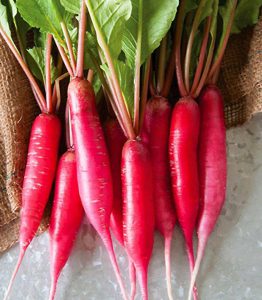
The long scarlet radish is beloved American heirloom radish variety that has a pinkish red skin and cylindrical shape. It is beloved for its uniquely sweet flavor. This variety is bit leaner than most of the other elongated varieties. The long scarlet radish is best harvested in the spring when the roots are young and tender. They can be eaten raw or cooked and make a delicious addition to salads, sandwiches, and stir-fries. Store radishes in the fridge in a plastic bag for up to two weeks. When choosing radishes at the grocery store, look for firm roots with bright, unblemished skin. Avoid radishes that are soft, mushy, or have brown spots. The long scarlet radish is a versatile and flavorful vegetable that has been enjoyed by generations of Americans. Try them in your next meal and see for yourself why this beloved radish variety is so popular.
• Top five facts about Long Scarlet type radish:
1. The Long Scarlet radish is a variety of radish that is quite popular in the United States.
2. The Long Scarlet radish is characterized by it’s long, slender shape and bright red color.
3. The long scarlet radish is a cool-season vegetable, and is typically planted in the spring or fall.
4. The Long Scarlet radish is smaller (slimmer) than Red Mammoth but usually larger and longer than Shunkyo variety.
5. The Long Scarlet radish has a carrot-like root which is approximately 6-9 inch-long.
The Helios Radish
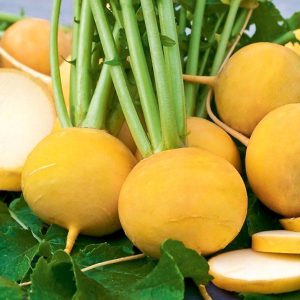
Another medium-early variety. Its ripening time is up to 30 days. Its main feature is the yellow color of the root crop. Its flesh is juicy, with a delicate flavor. Helios radish is primarily distinguished by it’s yellow color, and therefore often included in radish seed assortments packet along with some red, purple, green and pink varieties to create a colorful mix.
These radishes are among the few radishes that do not have a shades varying from light green to deep red hue. Helios get their name form the Greek sun god, Helios. The Helios Radish is believed to have originated in Asia and was later introduced to other regions. Helios radishes are considered to be one of the oldest cultivated vegetables.
Just like other radishes – their skin color does not match the flesh inside. Which means that it’s white inside, just like the most of radish varieties. And just like other radishes, helios radishes are used in salads and as a garnish. Helios radishes can also be pickled or used in stir-fries. These radishes should be stored in a cool, dry place and use within a week of purchase for best quality. When purchasing Helios, look for radishes that are firm and have crisp greens attached. Avoid radishes that are soft, bruised, or have yellowing leaves. Helios radishes can be enjoyed raw or cooked and make a beautiful addition to any dish.
The term of maturity for the radish root is 30 days. Root crop is bright yellow, weighing up to 20 g, rounded shape. The average yield is 2.3 kg/m square.
• Top five facts about Helios type radish:
1. It has a bright, sunny yellow skin and a white flesh.
2. It could be planted in the open ground from April to August inclusive.
3. The average yield is 2.3 kg/square meter.
4. The Helios radish is slightly larger than the traditional red radish, but not as large as the daikon radish.
5. It’s perfect for adding a pop of sweetness and color to your fresh salad.
While we can’t discuss every type of radish, nor would you want us too. The number variety is nearly endless and not all are interesting to grow cook or eat-but some may be more than others!

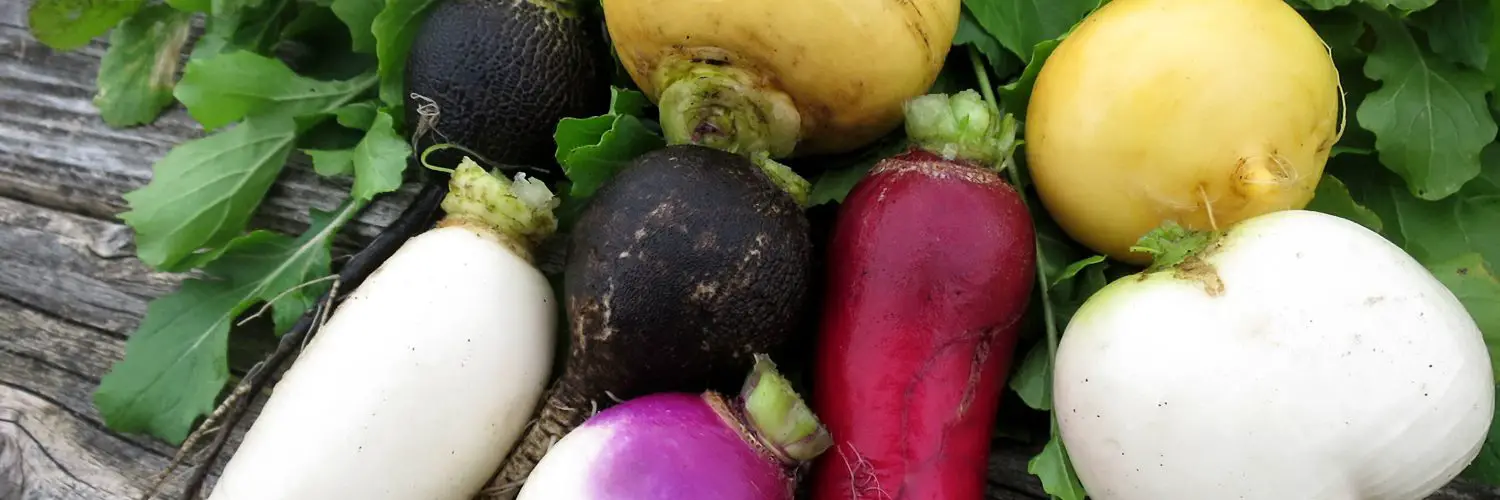

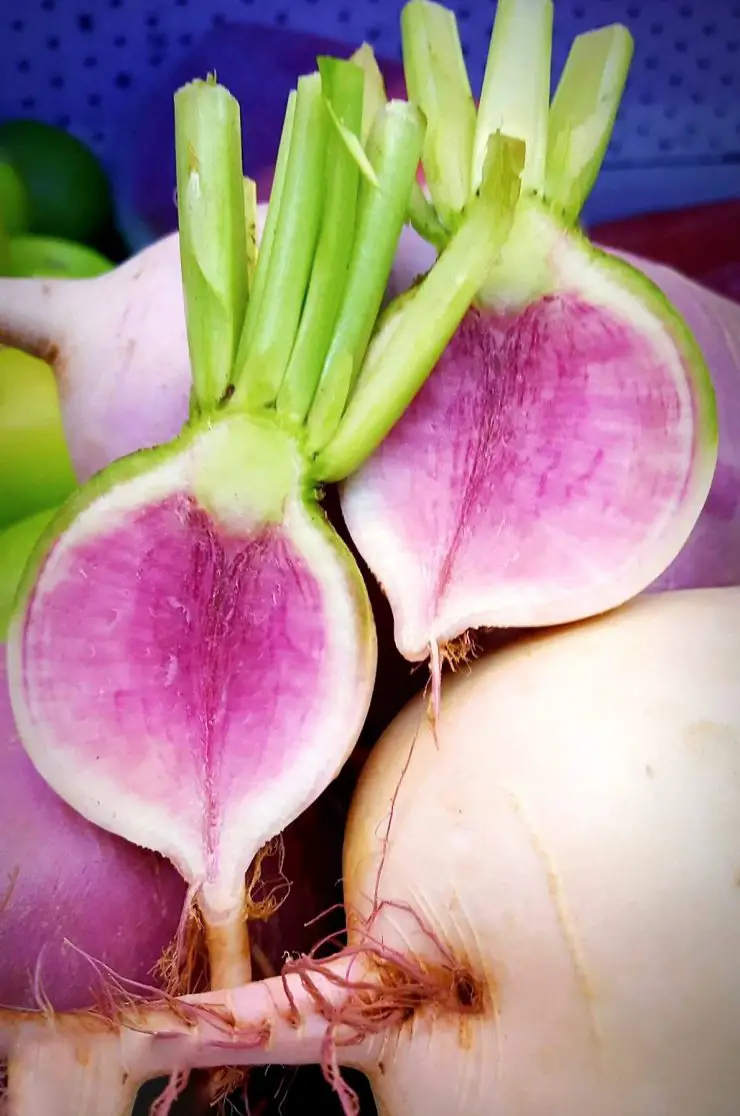
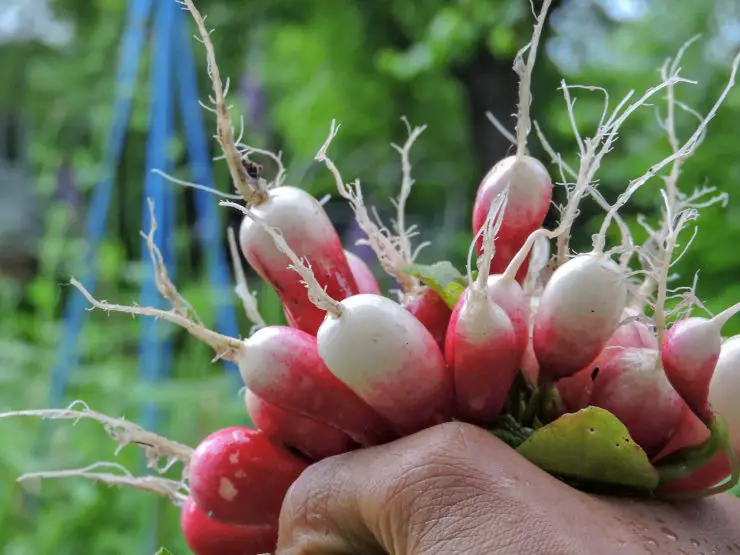
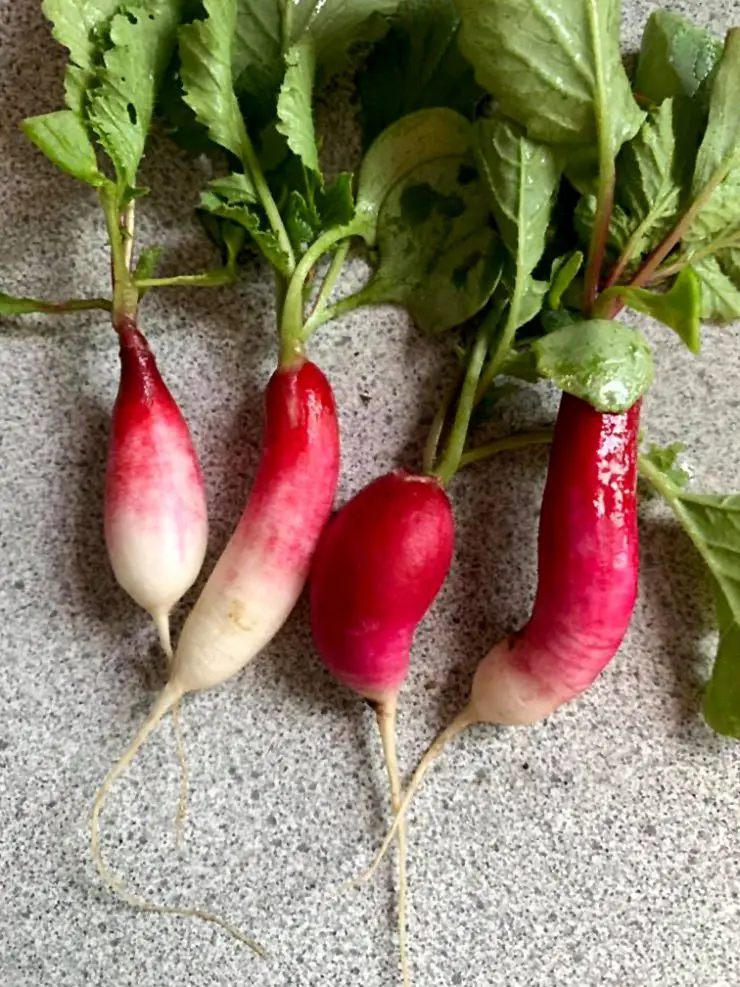
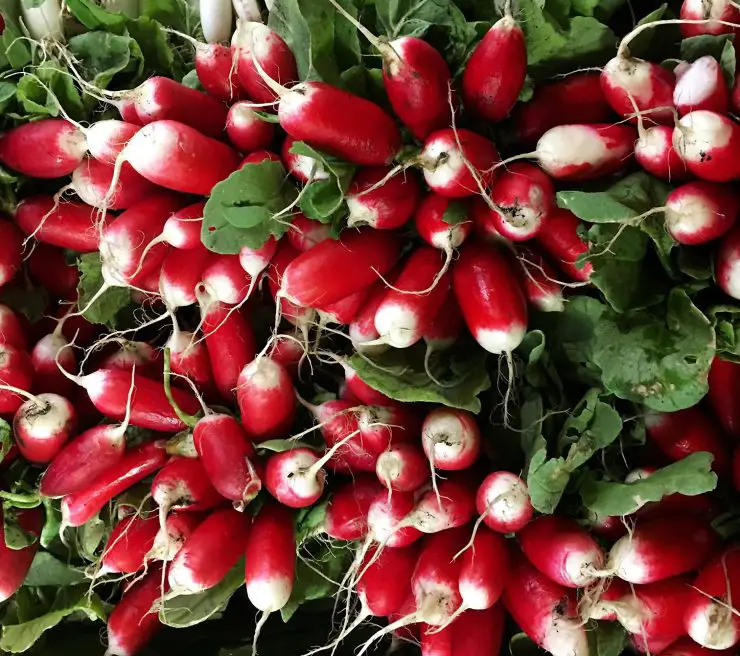
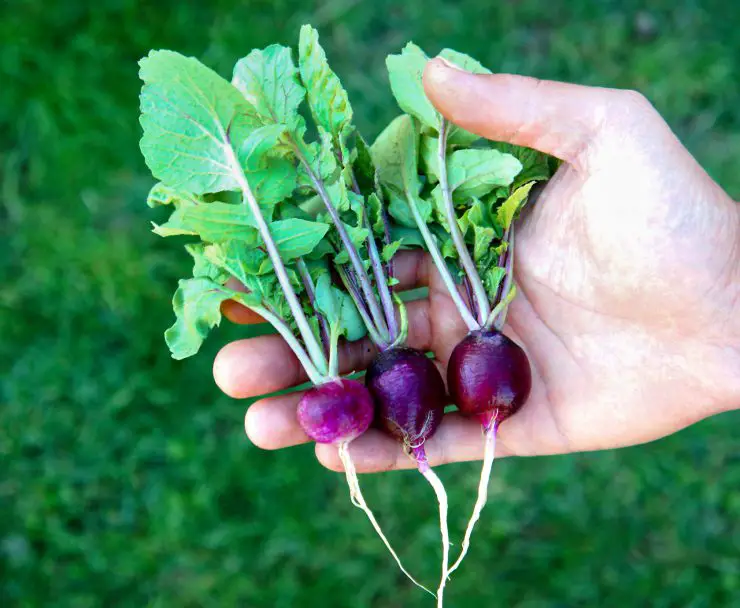
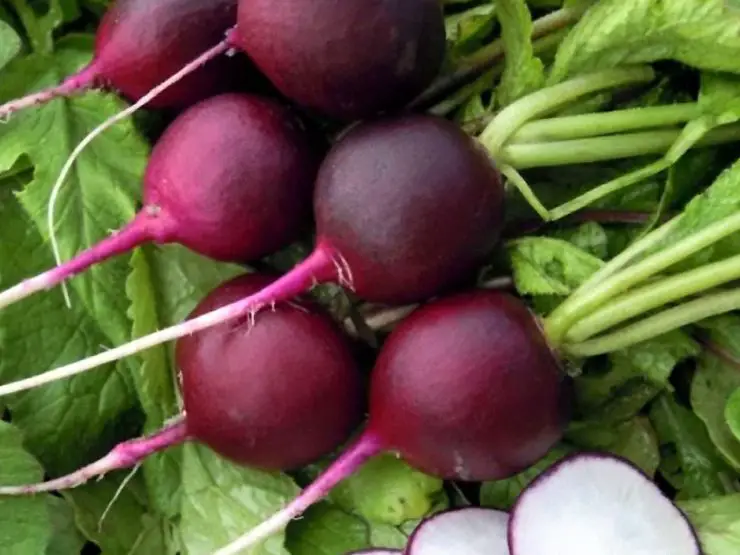
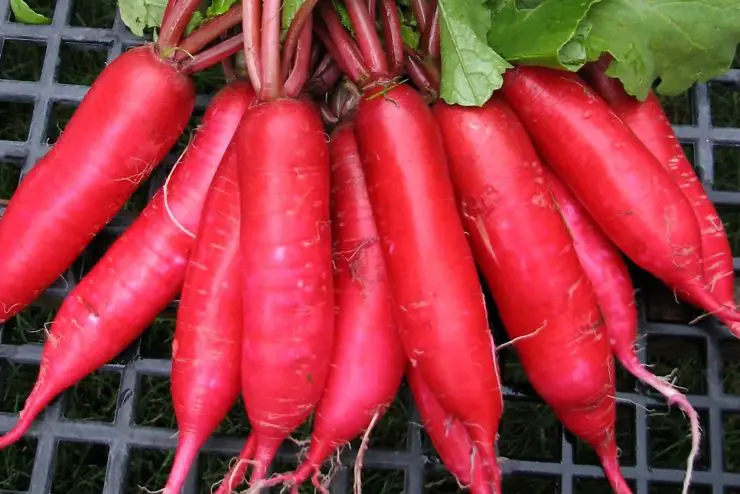
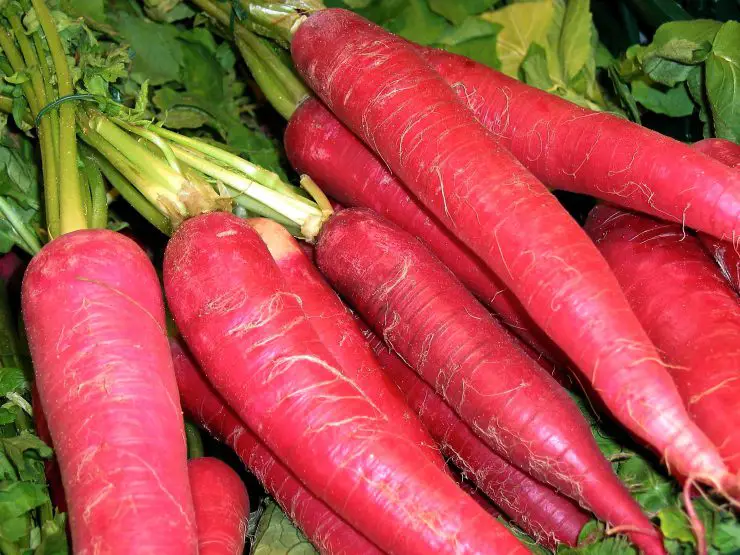
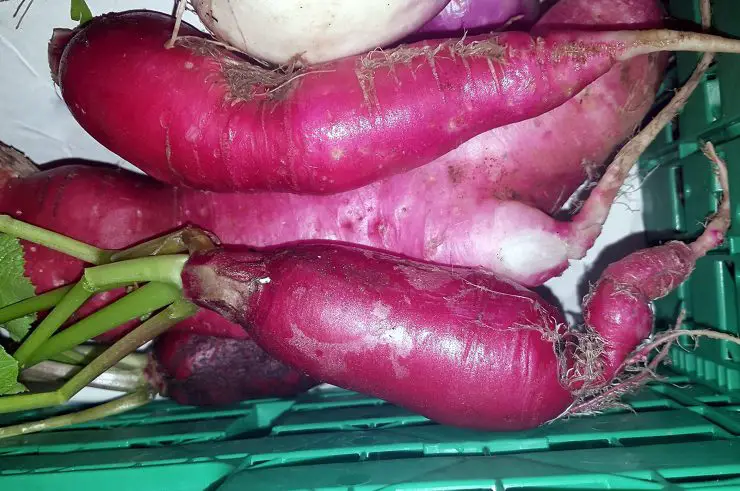
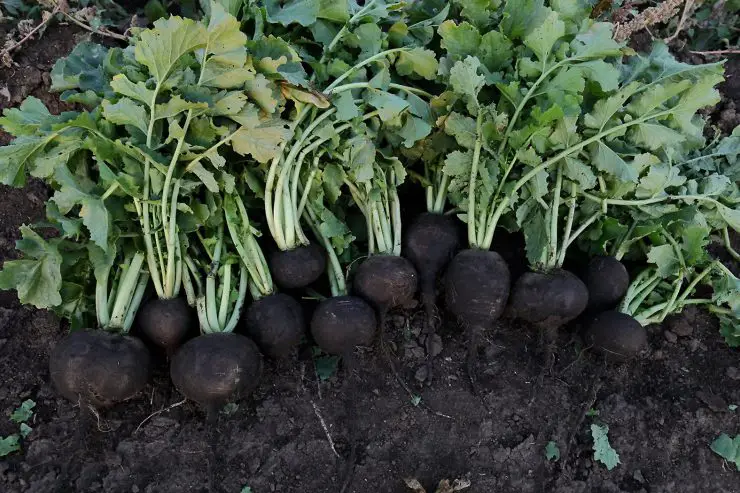

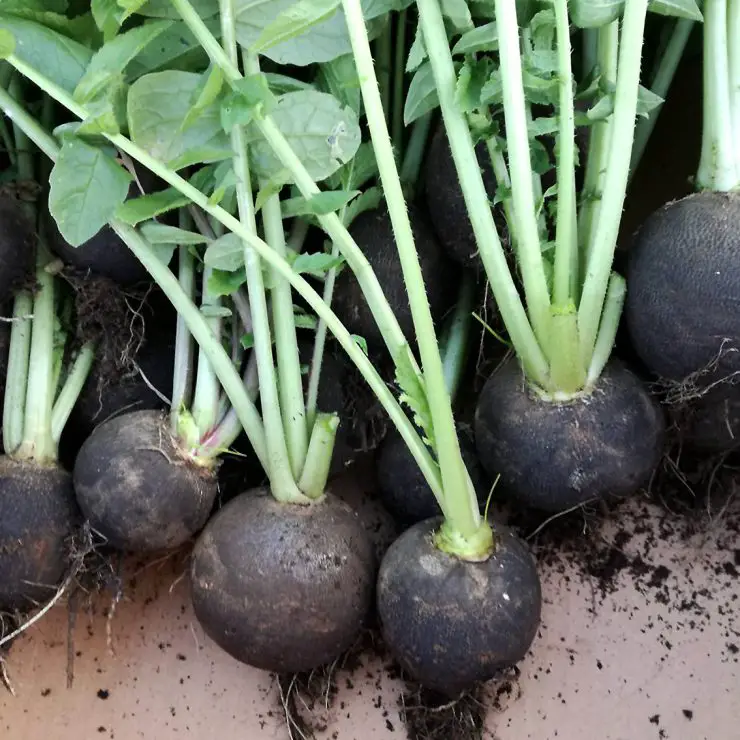
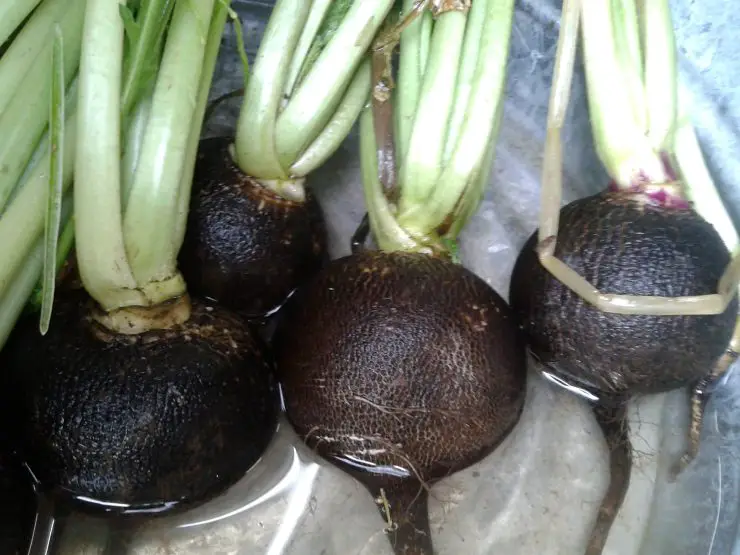
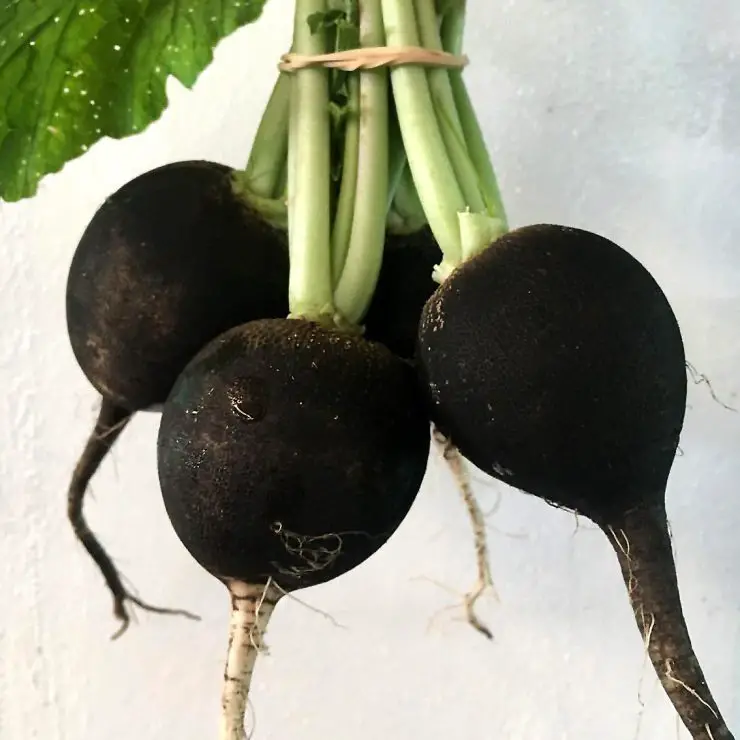
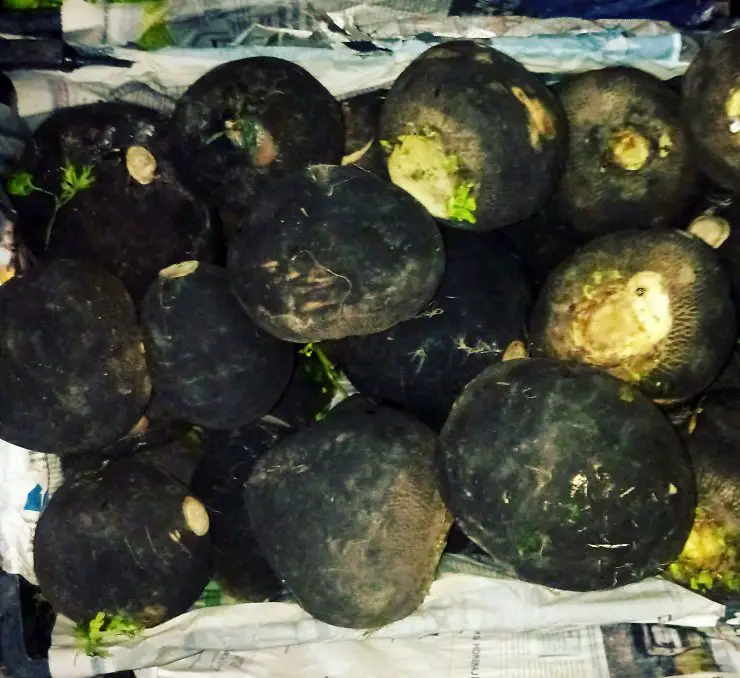
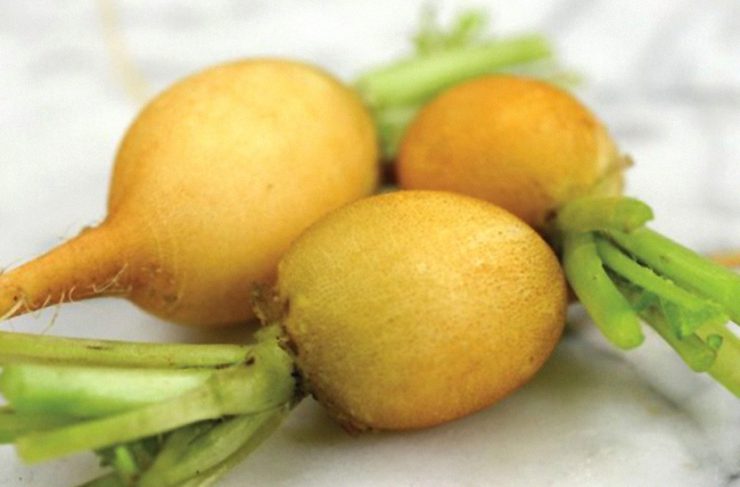
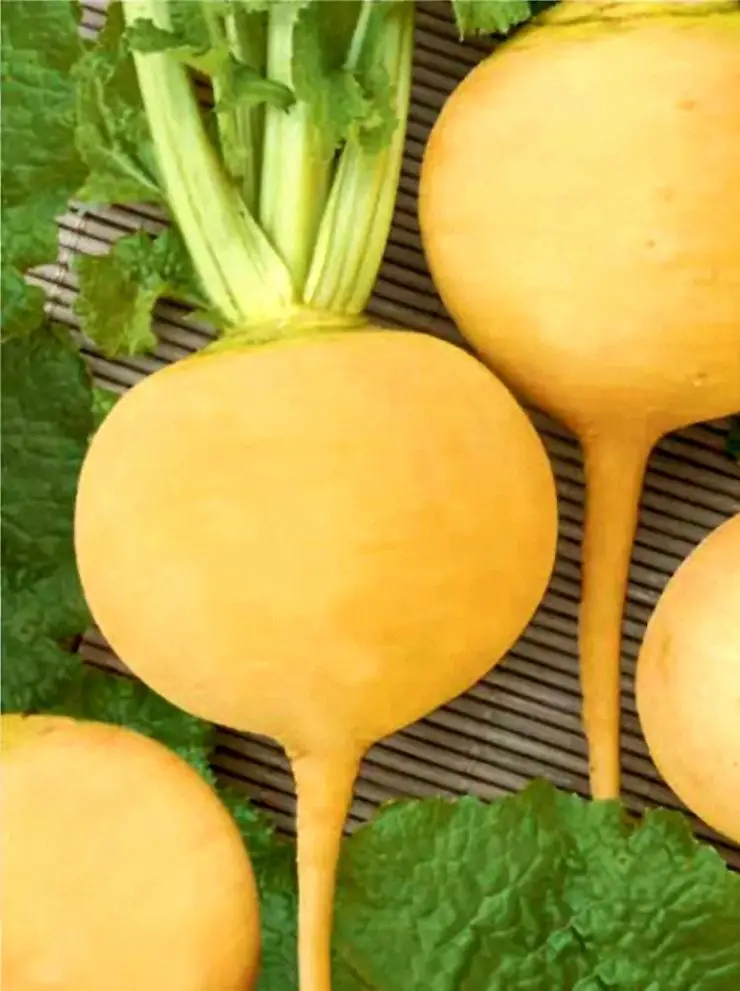
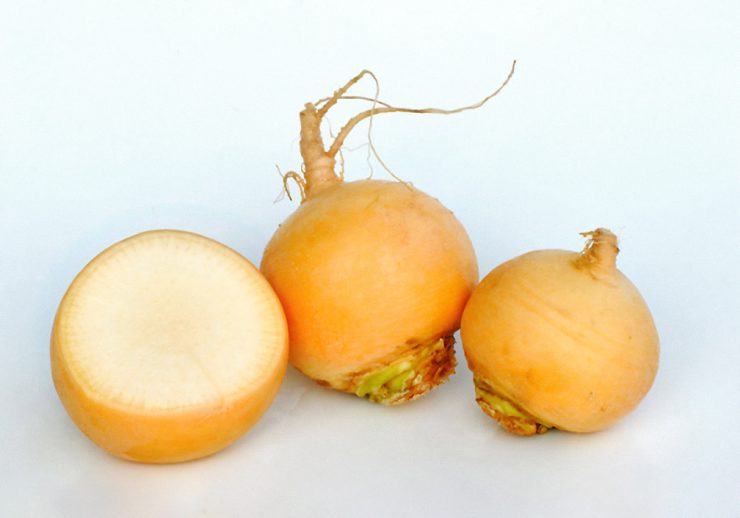
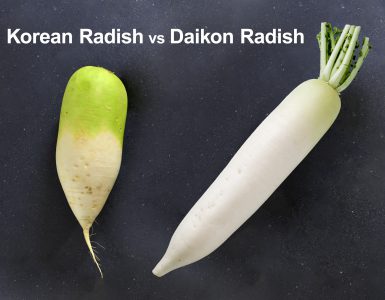
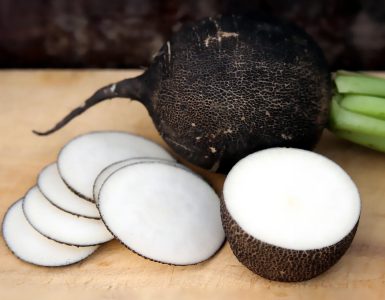
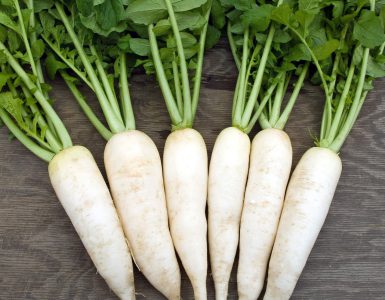









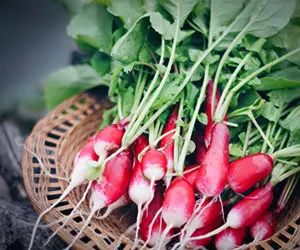

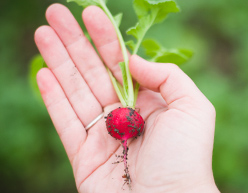






Add comment